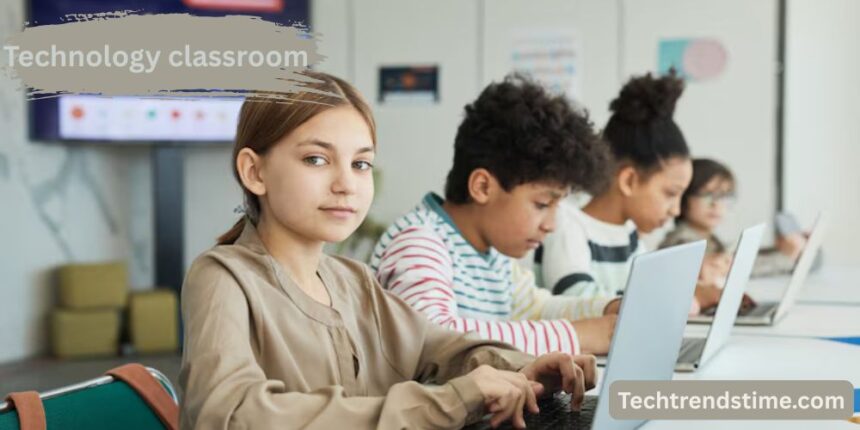Welcome to a world where chalkboards are relics, and digital screens are the new norm! technology classroom has completely transformed the way students learn and teachers teach. But how did we get here, and why is this shift so crucial? Remember when projectors were the most exciting thing in a classroom? Fast forward to today, and we have virtual reality, AI tutors, and online classrooms. The rapid advancement of tech has made it an integral part of education across the globe. Technology isn’t just a shiny toy; it’s a tool that makes learning accessible, engaging, and customized. It bridges gaps, empowers students, and prepares them for a future where digital literacy is as important as traditional literacy.
Benefits of a Technology Classroom
Alright, let’s dive into the good stuff—what makes technology classrooms a total game-changer?. Kids today are digital natives. Give them a tablet, and they’ll figure it out in minutes. Interactive apps, videos, and gamified lessons grab their attention better than any old textbook ever could. Not every student learns at the same pace. Technology allows for adaptive learning programs that tailor lessons to each student’s strengths and weaknesses. It’s like having a personal tutor for everyone!. Immediate feedback is crucial for growth. Digital platforms let teachers see who’s excelling and who needs extra help right away, allowing for swift interventions. We’re training future coders, data scientists, and digital marketers. Early exposure to technology gives students a head start on the skills they’ll need in their careers.
Key Technologies Shaping Modern Classrooms
Let’s talk gadgets and gizmos—because they’re more than just cool toys; they’re the backbone of modern education. Say goodbye to dusty whiteboards. Smartboards allow teachers to display lessons interactively, integrating videos, quizzes, and real-time student input. One device per student? It’s becoming the standard! Devices enable students to research, create, and collaborate instantly. From language-learning apps like Duolingo to math platforms like Khan Academy, educational software provides endless resources to complement traditional lessons. Imagine studying ancient Rome by walking through a VR simulation of the Colosseum. AR and VR make learning truly immersive and unforgettable. AI can grade assignments, recommend resources, and even tutor students on difficult subjects. It’s like having an extra teacher in the room!
How Teachers Are Adapting
Even the best technology won’t work if teachers aren’t ready to use it effectively. Schools are investing in teacher training programs to ensure educators are comfortable and confident with new technologies. Blended learning mixes traditional teaching with digital tools. It gives teachers the flexibility to reach students in various ways, catering to different learning styles.
Challenges of Technology Integration
It’s not all rainbows and unicorns—technology classrooms comes with its fair share of hurdles. Not every student has access to the latest tech at home. Schools must ensure no one is left behind due to economic disparities. Keeping students’ data safe is a big responsibility. Schools must invest in robust cybersecurity measures and educate students on digital citizenship. Technology should assist education, not replace it. Critical thinking, interpersonal skills, and creativity can’t be taught by machines alone.
Future Trends in the Technology Classroom
The future is looking bright—and extremely high-tech! Learning through games isn’t just fun; it’s effective. Points, badges, and leaderboards can motivate students like nothing else. Imagine predicting which students will need extra help before they even struggle. Machine learning can analyze trends and offer predictive insights. Diplomas and certifications on the blockchain? It’s already happening! Blockchain ensures secure, tamper-proof academic records.
FAQs About technology classroom
What is a technology classroom?
A technology classroom integrates digital tools like smartboards, laptops, and software into everyday learning to enhance education and engagement.
How does technology improve education?
It personalizes learning, improves access to information, increases engagement, and prepares students for future careers that require tech skills.
What are the biggest challenges with technology in classrooms?
Access inequality, cybersecurity risks, and the potential for students and teachers to become overly reliant on technology are major concerns.
What future technologies might enter classrooms soon?
Expect to see more AI, VR, blockchain for credentials, and gamification features popping up in education systems globally.
How can schools ensure equal access to technology?
By investing in infrastructure, offering loaner devices, partnering with tech companies, and securing funding for tech equity programs.
Conclusion
The technology classroom isn’t just a trend; it’s the new standard. From improving engagement to preparing students for a digital future, the benefits are clear. While there are challenges to tackle, the possibilities technology brings to education are endless and exciting. If schools continue to evolve and adapt, tomorrow’s learners will be better prepared than ever for the world that awaits them.


